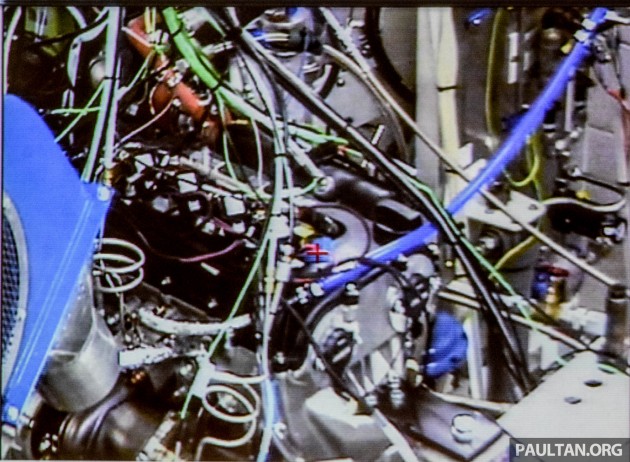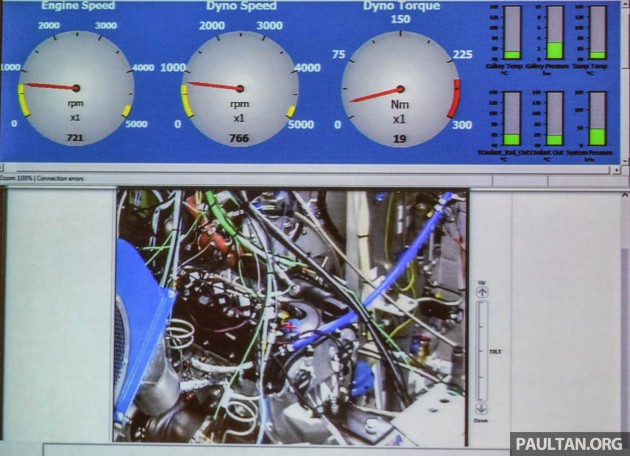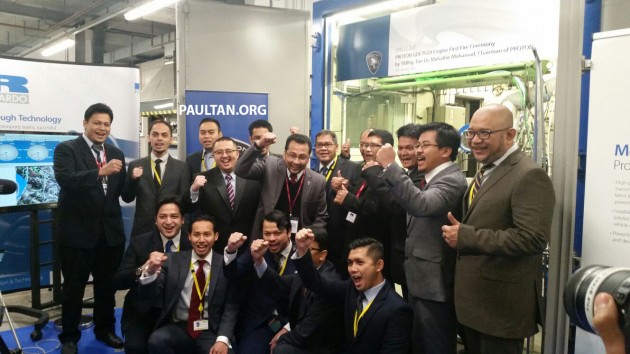Following the announcement that Proton will be building a new range of engines to replace its current crop, the national carmaker has provided some details of its new powerplants, which is a joint effort with UK-based engine developer, Ricardo.
Firstly, a short recap on the list of all the petrol engines that Proton is currently developing:
- 1.0 litre three-cylinder VVT (Variable Valve Timing)
- 1.2 litre three-cylinder VVT
- 1.3 litre four-cylinder GDI (gasoline direct injection)
- 1.3 litre four-cylinder TGDI (turbocharged gasoline direct injection)
- 1.5 litre four-cylinder GDI
- 1.5 litre four-cylinder TGDI
As you can tell, that is quite a number of engines that will go into Protons of the future, and its announcement marks a historic event in Proton’s path to achieve the next level of competitiveness.
According to Abdul Rashid Musa, Proton’s chief technical officer, over 200 engineers were involved in the new engines’ development, including those from Proton themselves. He said that the engines will also undergo a comprehensive round of testing at Lotus and Ricardo, vendors for calibration and local Proton engineers.
Collectively, the engines will be tested at 25 dyno test centres, encompassing around 250,000 hours of testing. That roughly translates to 4.8 million km on the road, to ensure the engine are stressed to their limits. The engine development project has a capital expenditure amounting to RM600 million alone.
From the six engines presented, the 1.5 litre TGDI is stated as the most powerful of the bunch, with around 180 hp and 250 Nm on tap. No numbers were provided for the other engines presented, although they are claimed to offer 20% higher performance compared to previous Proton engines.
Alternatively, we were told that the engines require at least RON95 fuel to function, and will be paired with a new torque converter CVT transmission as well. Proton say that the new transmission (said to be from Jatco) will be more efficient than what is currently offered, and they are in the final process of packaging the powertrains for future models.
Both the GDI and TGDI engines are said to have a modular architecture, consisting of a cast iron block. “The engines have a modular design, so we can chop off one cylinder (from the four-cylinder engine) to make it a three-cylinder engine,” said Proton CEO Datuk Abdul Harith Abdullah.
Proton is currently in the midst of optimising its current facilities, so the new engine family will stick to a cast iron block. “When the time is right, we will introduce a new aluminium block, which will reduce the weight of the engine,” said Proton vehicle development and engineering head, Amrizal Abd Majid.
“As it is, the new family already utilises aluminium cylinder heads,” he added. Harith chimed in, saying that it is normal to pay a little bit more for new tech, but Proton will continue to manage its costs to stay very competitive in the market.
The Euro 6C-compliant engines are said to feature a belt-driven starter generator, start/stop functionality, integrated exhaust manifold, Dual VVT and a timing chain. They’re said to have longer service intervals too. On the efficiency side of things, Proton is targeting a CO2 emissions level below 99 g/km. For the 1.0 litre, a fuel economy rating of 5.0 litres/100 km was cited, with 4.0 litres/100 km on the cards with some add-on tech.
This is certainly an exciting time for Proton as its upcoming engine line-up will find its way into its new models. However, don’t expect that to happen anytime soon, as the engine’s development will only make its way to Malaysia in September 2016. Therefore, end application of the new engines are said to include end-2017 Proton models.
AD: Drive the Proton model of your dreams. Submit your details and Proton PJ will get in touch with you.
Looking to sell your car? Sell it with Carro.
























AI-generated Summary ✨
Comments generally express cautious optimism and pride about Proton's new GDI and TGDI engines, highlighting the technology's potential to improve performance and fuel efficiency. Some comments criticise past engine choices like cast iron blocks and outdated technology, emphasizing the need for modern, lightweight materials. There is enthusiasm over Proton collaborating with renowned partners like Lotus and Ricardo, viewing it as a step forward. However, skepticism remains regarding Proton's ability to deliver on these promises, with doubts about actual implementation, future electric/hybrid plans, and concerns over engine reliability and efficiency. Overall, while some commenters are hopeful about Proton's technological progress, many remain cautious, demanding proper testing, quality, and transparency.